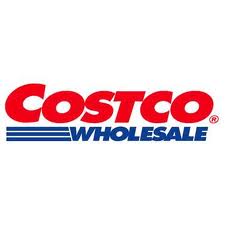 There is no doubt that Wal-Mart Stores, Inc. (NYSE:WMT) is one of the the world’s juggernaut companies, with more than 10,00 stores in 25 countries and $469 billion in sales. But lets take a look at how Costco Wholesale Corporation (NASDAQ:COST)
There is no doubt that Wal-Mart Stores, Inc. (NYSE:WMT) is one of the the world’s juggernaut companies, with more than 10,00 stores in 25 countries and $469 billion in sales. But lets take a look at how Costco Wholesale Corporation (NASDAQ:COST)
fares against the giant Wal-Mart and its other competitor, Target Corporation (NYSE:TGT).
Costco operates membership warehouses offering branded and private-label products in a range of merchandise categories. As of Nov. 25, 2012, it operates a total of 641 warehouses across the US, Canada, Europe and Asia.


For the last 10 years Costco Wholesale Corporation (NASDAQ:COST) has been reporting consistent sales growth, with a CAGR from 2008-2012 of 6.5%, reporting an increase in every year (except for 2009).
Although lower than its peers, Costco has been posting stable operating margins. It’s imperative to note that the company sells its goods almost at cost. Hence, most of its profits comes from its membership fees (explained below). It is a well known fact that suppliers to Costco Wholesale Corporation (NASDAQ:COST) and Wal-Mart Stores, Inc. (NYSE:WMT) do not have any bargaining power. For instance in 2009, Costco wasn’t satisfied with Coca-Cola’s prices, and hence simply stopped carrying Coca-Cola products.
Costco has high cash flow visibility given its increasing income from membership fees. Cash flows have been mainly utilized for its expansion plans and returning cash to its shareholders through share repurchases and dividends (as seen in the charts below):


Source: Company filings
Its USP – Strong Membership
Costco’s uniqueness lies in its membership fees. It charges a yearly membership of $55 to $110 to access its warehouses, something which most retailers do not do. Membership fees for 1Q13 have increased 14% to $511 million, and Costco’s member count has increased from 58,000 in FY10 to 67,000 in FY12 (CAGR of ~7.5%).
Costco Wholesale Corporation (NASDAQ:COST)’s primary concern is its customers, and this is well reflected in its 2012 customer renewal rate of 86% worldwide, and 90% in the U.S. and Canada, as well as continued increasing penetration of the $110 year executive membership in the U.S. and Canada (as per 1Q13 Earnings Call). Renewal rate continues to be strong despite Costco increasing its yearly membership fee by ~10% in November 2012. Besides giving its customers great deals, it also offers its customers a satisfaction safety net, wherein if a member claims that a product or a membership does not measure up, Costco promises a refund at 100% of the purchase price.
1Q13 Results
1Q13 sales increased 9.6% y-o-y with Comparable Same Store Sales (SSS) of +7% for the quarter and SSS, excluding gas and FX, of 6%. Gross margins were increased by 6bps to 10.68% (up 12 bps without gas inflation). Merchandise margins, down 1 bps, continue to be in negative territory, but compare favorably to the previous four quarters when the y-o-y core merchandising gross margin variances had ranged from -10 to -16 basis points. Operating profit increased 18%, while margins were up 25bps to 2.7% mainly due to lower selling, general and administrative expenses partially offset by higher pre-opening expenses due to its expansion plans.
Furthermore, for FY13, Costco guided $2 billion of capital expenditure, higher than the FY12 capital expenditure of $1.5 billion due to higher penetration of the number units planned in Asia and anticipated higher ramp of total openings schedule (plans to open 30 new stores, twice as many as last year).
Versus Competitors
Costco’s 1Q13 results outperformed its competitors Wal-Mart and Target. While Wal-Mart reported SSS of +3.8%, Costco reported SSS of +7%. Segment operating income for Costco also grew 18%, compared to Sam’s Club’s operating income increase of 12.7%. Similarly, Target Corporation (NYSE:TGT) reported 0.4% SSS, and operation profit increased 3.2%.
Further, Costco and Wal-Mart Stores, Inc. (NYSE:WMT) announced dividends in December 2012 in order to save shareholders from increased taxes. While Wal-Mart announced an accelerated dividend, Costco announced a special dividend of $7 per share over its regular dividend of $ 0.275. Costco’s special dividend was financed by additional debt of $3.5 billion. One may argue about whether Costco took the right decision in announcing special dividends or should have rather re-invested the cash flows back into the business. On the other hand, the majority of Wal-Mart’s dividends will go to the Walton family, who still own 51% of shares, whereas in Costco there is no such majority.
Costco loses its competitive advantage on the dividend front. While Wal-Mart Stores, Inc. (NYSE:WMT) has given its investors a dividend yield of 2.2% with a payout ratio of 32% and Target Corporation (NYSE:TGT) has a dividend yield of 2.1% with a payout ratio of 29%, Costco lags behind with a yield of 0.5% and payout of 26%. (Source: Yahoo! Finance)
Conclusion
Costco Wholesale Corporation (NASDAQ:COST) is one of those stocks which investors feel good about due to their strong membership and given that they are low cost provider in a huge market. To back it they have a history of buying back shares, increasing the dividend, and growing earnings. Future catalysts for its share prices include new store openings, continued membership retention, modest share buybacks, and consistent operating margins. However, investors should keep a watch on its membership fees and retention rates. If the raising of membership fees causes its retention rates to fall below its historic level of 85%, it may be a warning sign that its business model is weakening against its competitors.
The article Membership Fees, Costco’s Main USP originally appeared on Fool.com.
Copyright © 1995 – 2013 The Motley Fool, LLC. All rights reserved. The Motley Fool has a disclosure policy.


